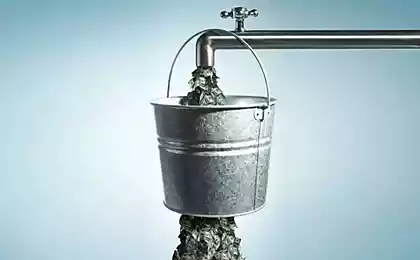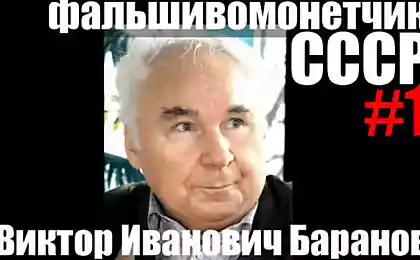396
Is it true that Soviet citizens had enough money for everything from paycheck to paycheck?
Even today, many remember the Soviet Union with sadness. They say that then they lived better. And there were prospects, and confidence in the future, and only natural products, and there was enough salary. There was also plenty to save money. Is it so? And were the salaries in the USSR really worthier than they are now?

© Depositphotos Salaries in the USSR For comparison, let's take the period of 70–80 years. These times were relatively recent. In addition, it was this period of time that was considered, perhaps, the most successful economically for the USSR.
And although equality was declared in a huge country, the monthly income of representatives of different professions, of course, differed. Although this difference was not as huge as in our time.

© Depositphotos Hard work for the benefit of the state was generally well paid. So, the miner's wages were about 600-1000 rubles. Incomes were also high in metallurgy. For example, the director of the plant was entitled to 800 rubles, the head of the shop - 500 rubles, the senior steelmaker - 400–600.
The salary of a worker at the plant was in the range of 180–300 rubles. The Hero of Socialist Labor could be paid up to 700 rubles. As for those who worked in the North or the Far East, they were entitled to bonuses and allowances, which increased their salaries by about one and a half times.
It is curious that the salaries of officials were quite modest. Thus, 450-500 rubles a month was enough for the first secretary of the regional committee. The general had to be content with 350 rubles, and the whole minister - 800 rubles.

© Depositphotos But you shouldn't think that all Soviet citizens earned at the ministerial level. After all, the salary of an engineer was about 170 rubles, an experienced teacher - 150 rubles, a kindergarten teacher - 80 rubles, a nurse - 80 rubles, a loader - 100 rubles, a cleaner - 70 rubles.
Although higher education was considered prestigious, students did not have to show off. The scholarship was 35–40 rubles. Although excellent students could receive an increased one - 50 rubles. And after graduation, a young specialist had to count on 70-120 rubles. Graduated with honors? Then get another 5 rubles on top.

© Depositphotos What could a salary buy? A box of matches cost 1 kopeck. The same price was for a glass of soda. But for a glass of kvass or for travel in public transport, you had to pay already 3 kopecks.
You could pamper yourself with an insanely delicious fruit and berry ice cream for 10 kopecks. The same amount would have to be paid for 1 kg of potatoes. A kilogram of cabbage or cucumbers cost the buyer only 7 kopecks.

© Depositphotos 11 kopecks - the price of a popsicle on a stick. Although a hungry traveler with this money could buy belyash. But for 16 kopecks you could buy a loaf of black bread or half a liter of milk. Wheat bread costs 28 kopecks, a liter of kefir - 30 kopecks, a liter of fermented baked milk - 39 kopecks.
A can of condensed milk cost 55 kopecks, a bar of Alenka chocolate - 80 kopecks, a kilogram of sugar - 94 kopecks, a package of Indian tea “with an elephant” - 95 kopecks. A kilogram of marshmallows - 2 rubles.
For a kilogram of doctoral sausage, a Soviet person gave 2 rubles and 30 kopecks, and for a kilogram of sausages - 2.60 rubles. About 2 rubles had to be paid for a kilogram of beef with bones. Pork cost 10 kopecks more.

It should be said not only about products. So, the b / w TV "Horizon" cost about 500 rubles, the refrigerator "Dnepr" cost the buyer 2 times cheaper. The Ocean radio receiver could be purchased for 132 rubles, and the Kiev camera for 410 rubles.
A motorcycle "Dnepr" with a sidecar had a price of 1640 rubles, "Zaporozhets" - 4 thousand, "Moskvich-412" - a little more than 5 thousand, "VAZ-2101" - 5600 rubles, "Volga" - 9 thousand rubles, "Niva" - 10300.
Many things like health care, education, or housing were free. But don't think that everything was so accessible. The problem is scarcity, when there wasn’t enough for everyone. For years, people stood in line to buy the conventional "Niva", and often did not wait for it. Although they had money to buy.

© Depositphotos Money did not play such a big role at that time. After all, you could only buy food or some necessary things. Therefore, the modest and not accustomed to abundance of Soviet citizens really had enough money for everything. It was also possible to postpone for the future.

© Depositphotos Salaries in the USSR For comparison, let's take the period of 70–80 years. These times were relatively recent. In addition, it was this period of time that was considered, perhaps, the most successful economically for the USSR.
And although equality was declared in a huge country, the monthly income of representatives of different professions, of course, differed. Although this difference was not as huge as in our time.

© Depositphotos Hard work for the benefit of the state was generally well paid. So, the miner's wages were about 600-1000 rubles. Incomes were also high in metallurgy. For example, the director of the plant was entitled to 800 rubles, the head of the shop - 500 rubles, the senior steelmaker - 400–600.
The salary of a worker at the plant was in the range of 180–300 rubles. The Hero of Socialist Labor could be paid up to 700 rubles. As for those who worked in the North or the Far East, they were entitled to bonuses and allowances, which increased their salaries by about one and a half times.
It is curious that the salaries of officials were quite modest. Thus, 450-500 rubles a month was enough for the first secretary of the regional committee. The general had to be content with 350 rubles, and the whole minister - 800 rubles.

© Depositphotos But you shouldn't think that all Soviet citizens earned at the ministerial level. After all, the salary of an engineer was about 170 rubles, an experienced teacher - 150 rubles, a kindergarten teacher - 80 rubles, a nurse - 80 rubles, a loader - 100 rubles, a cleaner - 70 rubles.
Although higher education was considered prestigious, students did not have to show off. The scholarship was 35–40 rubles. Although excellent students could receive an increased one - 50 rubles. And after graduation, a young specialist had to count on 70-120 rubles. Graduated with honors? Then get another 5 rubles on top.

© Depositphotos What could a salary buy? A box of matches cost 1 kopeck. The same price was for a glass of soda. But for a glass of kvass or for travel in public transport, you had to pay already 3 kopecks.
You could pamper yourself with an insanely delicious fruit and berry ice cream for 10 kopecks. The same amount would have to be paid for 1 kg of potatoes. A kilogram of cabbage or cucumbers cost the buyer only 7 kopecks.

© Depositphotos 11 kopecks - the price of a popsicle on a stick. Although a hungry traveler with this money could buy belyash. But for 16 kopecks you could buy a loaf of black bread or half a liter of milk. Wheat bread costs 28 kopecks, a liter of kefir - 30 kopecks, a liter of fermented baked milk - 39 kopecks.
A can of condensed milk cost 55 kopecks, a bar of Alenka chocolate - 80 kopecks, a kilogram of sugar - 94 kopecks, a package of Indian tea “with an elephant” - 95 kopecks. A kilogram of marshmallows - 2 rubles.
For a kilogram of doctoral sausage, a Soviet person gave 2 rubles and 30 kopecks, and for a kilogram of sausages - 2.60 rubles. About 2 rubles had to be paid for a kilogram of beef with bones. Pork cost 10 kopecks more.

It should be said not only about products. So, the b / w TV "Horizon" cost about 500 rubles, the refrigerator "Dnepr" cost the buyer 2 times cheaper. The Ocean radio receiver could be purchased for 132 rubles, and the Kiev camera for 410 rubles.
A motorcycle "Dnepr" with a sidecar had a price of 1640 rubles, "Zaporozhets" - 4 thousand, "Moskvich-412" - a little more than 5 thousand, "VAZ-2101" - 5600 rubles, "Volga" - 9 thousand rubles, "Niva" - 10300.
Many things like health care, education, or housing were free. But don't think that everything was so accessible. The problem is scarcity, when there wasn’t enough for everyone. For years, people stood in line to buy the conventional "Niva", and often did not wait for it. Although they had money to buy.

© Depositphotos Money did not play such a big role at that time. After all, you could only buy food or some necessary things. Therefore, the modest and not accustomed to abundance of Soviet citizens really had enough money for everything. It was also possible to postpone for the future.
What does unwillingness to have pets say about a person, according to a practicing psychologist?
Why housewives massively change old gas stoves for built-in induction























